Follow Us |Facebook
Call or Text for a Consultation
Recent Blog Posts
Warrantless Blood Draws and DUI
In Illinois, a DUI arrest can occur not only when an officer believes that someone is driving under the influence of alcohol, but a DUI arrest can occur when an officer has probable cause that an individual is driving under the influence of any controlled substance or marijuana. Currently, most breath analysis equipment is only able to determine the presence and/or amount of alcohol in a driver’s system. In order to determine whether or not a suspected drunk driver has any other controlled substance in their system (e.g., marijuana, cocaine, heroin, benzodiazepines, etc.), an officer will normally request that the driver submits to blood testing at a hospital (“blood draw”).
The United States Supreme Court has held that breath analysis testing is not subject to Fourth Amendment protection, while blood testing is subject to that protection. [1] This is important because if testing is subject to Fourth Amendment protection, law enforcement will be required to obtain a search warrant issued by a judge for any testing. There are many exceptions to this warrant requirement. For the purposes of this topic, the exception to the warrant requirement that has the most impact is called exigency.
Pregnant Women and Car Accidents
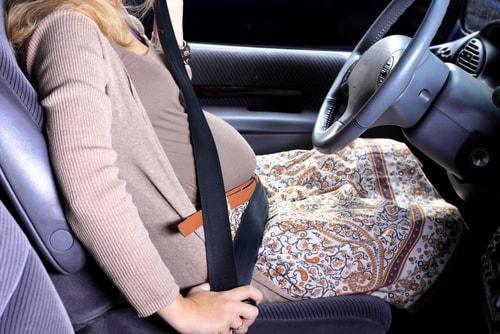 Having a child is one of the fondest memories in a person’s life. However, there are many factors to consider when a woman is expecting a baby, such as driving habits. Research has shown that pregnant women are 42 percent more likely to be involved in a car accident by the second trimester. By the third trimester, however, the likelihood of being involved in a car accident is far less than it is for mothers in their second trimester.
Having a child is one of the fondest memories in a person’s life. However, there are many factors to consider when a woman is expecting a baby, such as driving habits. Research has shown that pregnant women are 42 percent more likely to be involved in a car accident by the second trimester. By the third trimester, however, the likelihood of being involved in a car accident is far less than it is for mothers in their second trimester.
Statistics of Pregnant Women in Car Accidents
About one in 50 pregnant women will be involved in a car accident at some time in their pregnancy. At the first month of the first trimester of pregnancy, there was a reported 4.33 crashes per 1,000 women per year. However, at the first month of the second trimester, the car accident rate increased to 7.66 crashes per 1,000 women per year. During the entire second trimester, the car accident rate was 6.47 car accidents per 1,000 women per year. During the last month of pregnancy, the car accident rate decreased to 2.74 crashes per 1,000 women for every year. After the birth of the baby, the car accident rate further decreased to 2.35 crashes per 1,000 women per year.
PTSD from Car Accidents
 Being in a car accident can be a very scary experience, even for the most seasoned drivers. With the event being a sudden occurrence, the individuals involved in the car accident may not remember much at first. Over time, post-traumatic stress disorder, or PTSD, can develop, with accidents being the most frequently experienced traumatic event among males and the second most frequently experienced traumatic event among females. Regardless, many survivors of car accidents frequently experience mental health difficulties, including post-traumatic stress disorder, depression, and anxiety.
Being in a car accident can be a very scary experience, even for the most seasoned drivers. With the event being a sudden occurrence, the individuals involved in the car accident may not remember much at first. Over time, post-traumatic stress disorder, or PTSD, can develop, with accidents being the most frequently experienced traumatic event among males and the second most frequently experienced traumatic event among females. Regardless, many survivors of car accidents frequently experience mental health difficulties, including post-traumatic stress disorder, depression, and anxiety.
What Is Post-Traumatic Stress Disorder?
Post-traumatic stress disorder, also known as PTSD, is a condition that develops when people have experienced a scary or dangerous event. Nearly everyone who has been involved in a car accident will feel afraid immediately following the situation, but the majority of those individuals will recover from the “fight or flight” response rather quickly. Individuals who still feel afraid and experience the “fight or flight” response typically have PTSD and may feel stressed or frightened, even when they are not in danger.
How Will Uninsured Motorist Coverage Protect You?
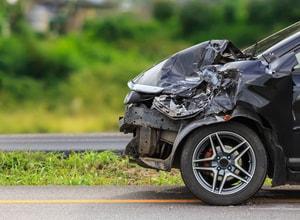 Getting involved in a car accident is a very scary event, especially if you or a loved one was hurt. If the other driver did not have auto insurance coverage at the time of the accident, there may be very serious consequences that could be faced. It is always important for both parties to have auto insurance coverage, as to protect themselves from hefty payments from the accident and related injuries. Uninsured motorist is good to have, as the insured will be protected in the event that the other person does not have auto insurance coverage.
Getting involved in a car accident is a very scary event, especially if you or a loved one was hurt. If the other driver did not have auto insurance coverage at the time of the accident, there may be very serious consequences that could be faced. It is always important for both parties to have auto insurance coverage, as to protect themselves from hefty payments from the accident and related injuries. Uninsured motorist is good to have, as the insured will be protected in the event that the other person does not have auto insurance coverage.
What Will Uninsured Motorist Coverage Provide Compensation For?
Typically, uninsured motorist coverage will provide for medical expenses, funeral expenses, loss of income, and pain and suffering. If a person is injured in a car accident and does not have uninsured motorist coverage, then he or she will typically be responsible for those expenses, as the insurance company will not pay if uninsured motorist coverage is not listed on the policy.
The Dangers of Black Ice
 This month, the weather has been in the sub-zero degrees and driving conditions have been under par. The weather may get warmer, but we should not get too excited. As temperatures may be no more than 32 degrees, we are still in freezing temperatures, and we need to prepare for the worst driving conditions. Black ice is a very common factor in car accidents, and we need to know the dangers that black ice can cause.
This month, the weather has been in the sub-zero degrees and driving conditions have been under par. The weather may get warmer, but we should not get too excited. As temperatures may be no more than 32 degrees, we are still in freezing temperatures, and we need to prepare for the worst driving conditions. Black ice is a very common factor in car accidents, and we need to know the dangers that black ice can cause.
What Is Black Ice?
Black ice is a thin coat of ice that is often impossible to see on the roadways, which can cause dangerous driving conditions. Black ice is formed when temperatures rise above freezing, or if the sun comes out at daytime. Any moisture on the ground will melt, and roadways will be wet. Puddles may form if it rains. Then, later in the evening, if the temperature drops below zero, the water formed will freeze again, and black ice will likely form.
Why Is Black Ice Dangerous?
How to Avoid a Potential Medical Malpractice Case
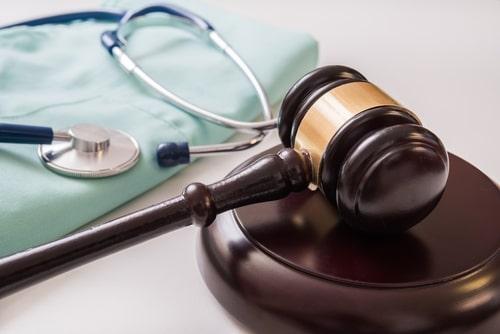 Being affected by a medical malpractice case does not only affect you; the misdiagnosis negatively affects the doctor and his or her medical career. Every year, medical malpractice has killed over 200,000 patients in the United States. To potentially prevent a medical malpractice case from ever occurring, there are ways to establish a good relationship with your doctor.
Being affected by a medical malpractice case does not only affect you; the misdiagnosis negatively affects the doctor and his or her medical career. Every year, medical malpractice has killed over 200,000 patients in the United States. To potentially prevent a medical malpractice case from ever occurring, there are ways to establish a good relationship with your doctor.
Making the Right Medical Diagnosis
To make sure that a person avoids as many medical malpractice cases as possible, it is best for him or her to make an appointment with a specialist, depending on the symptoms and type of illness. That person should also have, in writing, all of the symptoms that he or she is experiencing. The person must be truthful in what he or she writes because there have been far too many cases where the person forgets to tell the doctor other experienced symptoms.
How to Prevent a Winter Pedestrian Accident
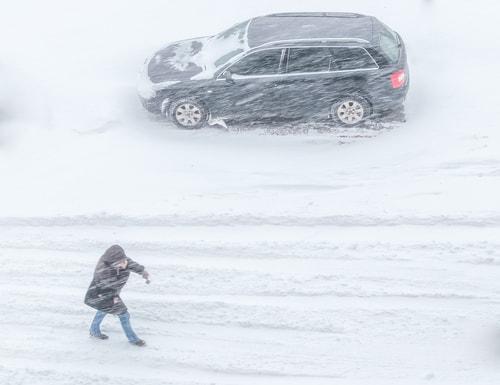 We are at the end of November, and we may have some snow in the Chicago and Cook County areas in the upcoming months. During the winter, there are far too many people who do not plan ahead and therefore end up in the hospital after a bad encounter with ice on the roads. Pedestrian accidents often occur when roads are treacherous, and cars are unable to stop on the ice. Considering all of this, it is best to prepare for the colder and snowier months, and here are some ways to keep yourself safe and away from the emergency room because of an accident.
We are at the end of November, and we may have some snow in the Chicago and Cook County areas in the upcoming months. During the winter, there are far too many people who do not plan ahead and therefore end up in the hospital after a bad encounter with ice on the roads. Pedestrian accidents often occur when roads are treacherous, and cars are unable to stop on the ice. Considering all of this, it is best to prepare for the colder and snowier months, and here are some ways to keep yourself safe and away from the emergency room because of an accident.
Wear Appropriate Clothes
To prevent any slip and fall accidents due to icy sidewalks, it is best to wear proper footwear and clothes that can be easily seen. Invest in shoes with heavy treading and flat bottoms, so that the whole foot is on the ground’s surface. When snow is bad, sunglasses and bright clothing are appropriate. People driving cars will be more likely to see pedestrians who wear bright clothes and therefore prevent a car accident involving pedestrians.
How to Avoid Workplace Injuries During the Holidays
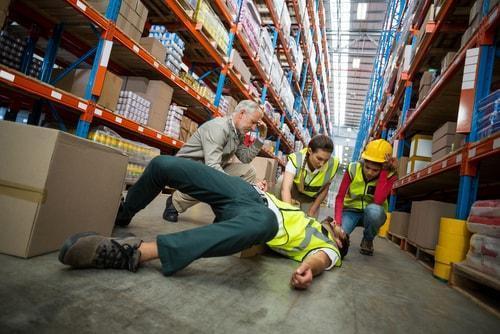 We are now about to end our first week of December, and we are starting to get more stressed out about the holidays. During the holiday season, more temporary and seasonal employees are hired in the retail industry. Many businesses flourish during this period of time since most people wait until the last minute to get their shopping done. When working in retail during this busy time, it is best to familiarize yourself with safety rules in the workplace, so you can avoid getting involved in a potentially serious accident at work.
We are now about to end our first week of December, and we are starting to get more stressed out about the holidays. During the holiday season, more temporary and seasonal employees are hired in the retail industry. Many businesses flourish during this period of time since most people wait until the last minute to get their shopping done. When working in retail during this busy time, it is best to familiarize yourself with safety rules in the workplace, so you can avoid getting involved in a potentially serious accident at work.
Best Ways for Employers to Enforce Safety Rules in the Workplace
In retail, particularly, employees are expected to implement strict rules on safety for employees. Some very simple ways that employers can enforce safety precautions include on-the-job training on the first day, clear and concise safety policies, and a safe environment. Employees who are working temporarily should feel comfortable enough approaching their managers and supervisors with any questions or concerns.
Steps after a Car Accident
 Most people will be involved in at least one car accident in their life. Some accidents may be minor, such as a fender bender, and others may be so serious that there are deaths involved. However serious the accident is, everyone wants to make sure they avoid being involved in one altogether. If you or a loved one has been in a car accident, there are some steps that you need to take to successfully handle the situation.
Most people will be involved in at least one car accident in their life. Some accidents may be minor, such as a fender bender, and others may be so serious that there are deaths involved. However serious the accident is, everyone wants to make sure they avoid being involved in one altogether. If you or a loved one has been in a car accident, there are some steps that you need to take to successfully handle the situation.
Check for Injuries
The first thing that the person involved in a car accident must do is check for injuries. Someone in the car must call 911 if there are any injuries. If the person was seriously injured, he or she must try hard not to move and wait for emergency personnel to arrive. If there was anyone else in the car at the time of the accident, the other passengers must check themselves for injuries.
Get to a Safe Area
Slip and Fall Injuries in Illinois
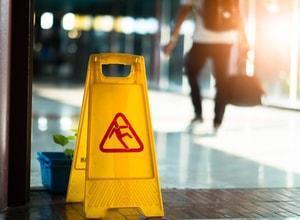 In cartoons, when one character slips on a banana and falls on the ground, we are all supposed to laugh at the character’s ignorance and somewhat hilarious consequences that follow. For over fifty years, this type of slapstick comedy was a common way to get audiences to laugh and have a carefree time. Unfortunately, the reality is nothing like cartoons. In fact, when a person slips and falls, he or she may suffer some very serious injuries and may even die, depending on the level of complications that follow the slip and fall.
In cartoons, when one character slips on a banana and falls on the ground, we are all supposed to laugh at the character’s ignorance and somewhat hilarious consequences that follow. For over fifty years, this type of slapstick comedy was a common way to get audiences to laugh and have a carefree time. Unfortunately, the reality is nothing like cartoons. In fact, when a person slips and falls, he or she may suffer some very serious injuries and may even die, depending on the level of complications that follow the slip and fall.
Slip and Fall Injury Statistics
Slip and fall injuries can be very serious if not treated right away. More women than men will experience a slip and fall accident in their lives, and of the more serious slip and fall injuries is a bone fracture.
- Over eight million emergency room visits are because of a slip and fall injury.
- Five percent of people who fall will experience a bone fracture, and they may even lose several weeks of work, depending on the severity of the injuries from the slip and fall accident.




